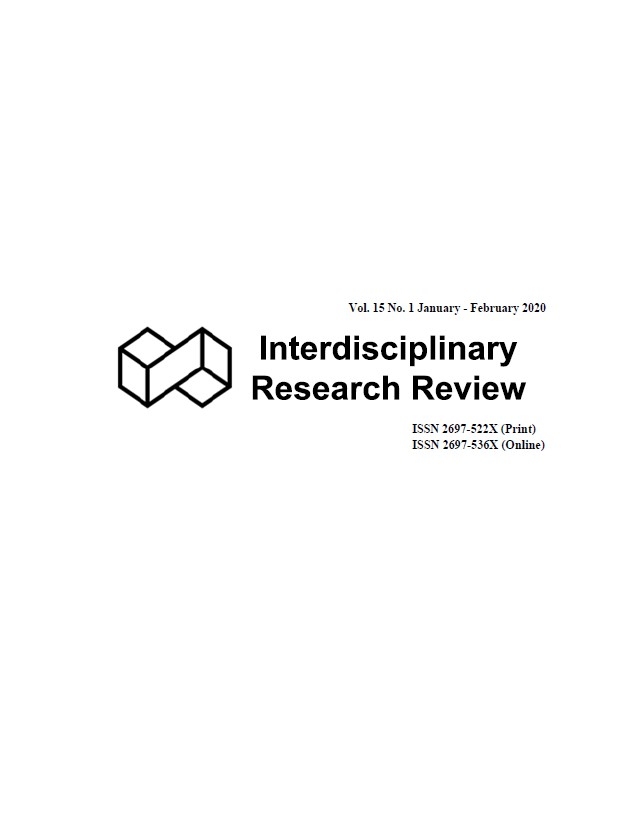Condom supply to global fund: An analysis of participation by Malaysian companies
Main Article Content
Abstract
Malaysia, the world’s largest single exporter of condoms, supplies of condoms to Global Fund to Fight AIDS, Tuberculosis and Malaria (GFATM) recipients is valued at about USD37 billion which is about 41% of the total USD91 million condoms procured for the period of 2008–2013. This is despite the backdrop of encouraging local production of health commodities in Africa and participation of local African manufacturers to be qualified suppliers. There has also been reported instances of poor quality products supplied, breach in procurement procedures, and high unit costs of condoms. This study identified the country characteristics and product characteristics of Malaysia’s firms supply of condoms to the Global Fund programme. The study also contributes in providing decision-makers and suppliers (not only limited to Malaysian suppliers) on the important country and product characteristics in the supply of contraceptives besides increasing information to potential applicants for tender called by GFATM. Random eect estimation was conducted on unbalanced panel data of Malaysia’s supply of condoms to Global Fund recipients in 44 countries for the period of 2008–2013. In terms of country characteristics, HIV prevalence and African countries were significantly positive, while being a fragile state (World Bank classification), health expenditure per capita and number of physician per 1,000 people were insignificant. For product characteristics, average quantity divided by distance between Malaysia and recipient country, and average unit price of below USD0.07 were significant but average unit price of below USD0.02 were insignificant (average price based on past literature of procurement for Global Fund). The increased analysis and discussion of these country and product characteristics based on data on public domain (for increased transparency) has noticeable eect towards more ecient supply process. Suppliers or aspiring suppliers may supply condoms for social cause to the recipients in countries that need them at product characteristics most required, thus also contributing to more ecient tender and supply process.
Article Details
References
GFATM, Sourcing & Management of Health Products,Available from:https://www.theglobalfund.org/en/sourcing-management/(assessed 26 June 2018).
Joint United Nations Programme on HIV/AIDS, UNFPA,WHO and UNAIDS: Position statement on condoms and theprevention of HIV, other sexually transmitted infections and un-intended pregnancy.
Malaysian Rubber Export Promotion Council. IndustryOverview. Available from: http://www.mrepc.com/industry/worldproduction.php (assessed 26 June 2017).
S. Radelet, B. Siddiqi, Global Fund grant programmes: an anal-ysis of evaluation scores, The Lancet 369 (9575) (2007) 1807 –1813.
C. Lu, C. M. Michaud, K. Khan, C. J. Murray, Absorptive ca-pacity and disbursements by the Global Fund to Fight AIDS,Tuberculosis and Malaria: analysis of grant implementation,The Lancet 368(9534) (2006) 483 – 488.
R. Hecht, L. Bollinger, J. Stover, W. McGreevey, F. Muhib,C. E. Madavo, D. de Ferranti, Critical choices in financing theresponse to the global HIV/AIDS pandemic, Health Affairs 28(6) (2009) 1591 – 1605.
GFATM, Update on the Price and Quality Reporting (PQR)System, Geneva, Switzerland, 2010.
F. Wafula, A. Agweyu, K. Macintyre, Trends in procurementcosts for HIV commodities: A 7-year retrospective analysisof global fund data across 125 countries, JAIDS Journal ofAcquired Immune Deficiency Syndromes 64(4) (2014) e134 –e1349.
The Hindustan Times, Ethiopia to throw away 69 million poorquality condoms ‘made by Indian company’, The HindustanTimes, 2016
The Herald, Donors Expose Ghana In US$ 6 Million FakeCondoms Dirty’, The Herald, 2013
N. Martindale, Namibian government ends condom contractwith Comex’, The Herald, 2010.
Karex Berhad, Annual Report Karex Berhad 2017, KualaLumpur, 2017.
J. Stover, J. E. Rosen, M. N. Carvalho, E. L. Korenromp, H.S. Friedman, M. Cogan, B. Deperthes, The case for investing inthe male condom, PloS One 12(5) (2017) e0177108.
A. Vasan, D. Hoos, J. S. Mukherjee, P. E. Farmer, A. G.Rosenfield, J. H. Perri ̈ens, The pricing and procurement ofantiretroviral drugs: An observational study of data from theGlobal Fund, Bulletin of the World Health Organization 84(2006) 393 – 398.
Karex Berhad, Fast Facts, Kuala Lumpur, 2015.
Thai Nippon Rubber Industry (TNR), Information Memoran-dum, Bangkok, 2016.
M. T. Jallow, L. Li, M. Auton, M. Xu, Global Fund & CC-CMHPIE Supplier Conference, GFATM, Beijing, 2017.
World Bank, International Economics Dept., DevelopmentData Group, World Development Indicators, World Bank,2016.
A. Bell, K. Jones, Explaining fixed effects: Random effectsmodeling of time-series cross-sectional and panel data, PoliticalScience Research and Methods 3(1) (2015) 133 – 153.
M. Hujala, H. Arminen, R. C. Hill, K. Puumalainen, Explain-ing the shifts of international trade in pulp and paper industry,Forest Science 59(2) (2013) 211 – 222.
T. Mayer, S. Zignago, CEPII Distance data, Centre D’EtudesProspectives et D’Informations Internationales, Available from:http://www.cepii.fr/anglaisgraph/bdd/distances.htm. (accessed2006).


